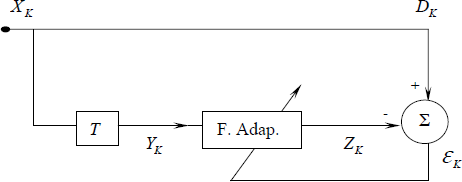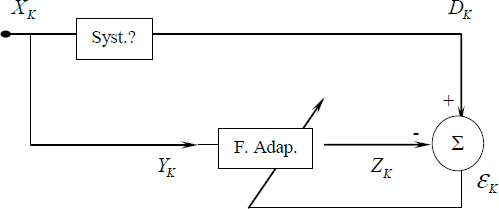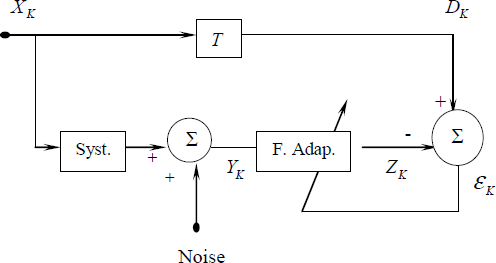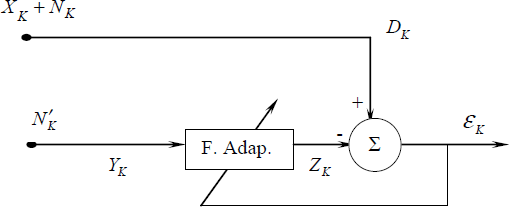Chapter 6
Adaptive Filtering: Algorithm of the Gradientand the LMS
6.1. Introduction
By adaptive processing, we have in mind a particular, yet very broad, class of optimization algorithms which are activated in real time in distance information transmission systems.
The properties of adaptive algorithms are such that, on the one hand, they allow the optimization of a system and its adaptation to its environment without outside intervention, and, on the other hand, this optimization is also assumed in the presence of environmental fluctuation over time.
It is also to be noted that the success of adaptive techniques is such that we no longer encounter them only in telecommunications but also in such diverse domains as submarine detection, perimetric detection, shape recognition, aerial networks, seismology, bio-medical instrumentation, speech and image processing, identification of control systems, etc.
Amongst the applications cited above, different configurations arise.
Figure 6.1. Prediction

Figure 6.2. Identification

Figure 6.3. Deconvolution

Figure 6.4. Cancellation

In the ...
Get Discrete Stochastic Processes and Optimal Filtering, 2nd Edition now with the O’Reilly learning platform.
O’Reilly members experience books, live events, courses curated by job role, and more from O’Reilly and nearly 200 top publishers.

